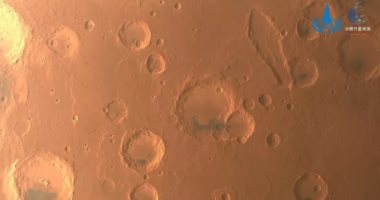will arrive Mars Tomorrow, Thursday, December 1, 2022, at its closest distance from the Earth – the perihelion point – where it will be within 80 million kilometers, in a phenomenon that occurs approximately every two years and has no effect on our planet..
The Astronomical Society of Jeddah has revealed, in a report, that since the size and illumination of the planet Mars increases in the night sky when it is close to Earth, days near its closest distance from us present the best time to monitor it. in addition to its brightness currently surpassing all stars and even the star Sirius, the brightest star in the night sky.
And the report continued: This effect is clear because Mars is close to the Earth in the solar system, orbiting somewhat away from the sun at an average distance of 227,388,763 km, and consequently has the greatest variation among all planets in the distance that separates it from the Earth depending on whether the planets are on either side of the Sun or are passing next to each other.
Mars reaches its perihelion almost as it passes the Earth and at this moment the sun, the Earth and Mars are arranged in a straight line and the Earth is in the middle, and consequently Mars appears almost opposite the sun in the sky – a phenomenon called opposition, when Mars reaches its highest point in The sky is at midnight and it is visible all night.
The arrival of Mars at the closest distance from the Earth is associated almost simultaneously with the phenomenon of convergence, but the two events usually occur with an interval of time now of a few days due to the orbits of the Earth and Mars around the sun, which they are elliptical, not circular and are not exactly on the same level.
Mars will be observed on the northeastern horizon after nightfall and will remain visible until dawn the next day. It should be emphasized that although Mars will be at its closest distance from Earth, it will appear to the unaided eye observer as a point of red-orange light with a brightness of (-1), and through binoculars it can be seen as a disk of light..
Also, this is an opportunity to look for the very small Martian moon, Phobos (fear), with a diameter of about 22.2 km, but it is 7 times larger than the second moon, Deimos (horror), which has a diameter of about 12.4 km. It is closer to asteroids than to large moons such as Earth’s moon, and it is possible that Mars has captured them with the force of its gravity.
Mars is the only planet whose surface details can be seen from Earth, as for Mercury it is very small, while the other planets are covered in clouds, so it is an ideal event for everyone as Mars will be clearly and distinctly visible throughout the night is easy to identify in the dome of the sky.
To see the details of Mars’ disk, the observer must use a telescope 8 inches and larger. It is best to use appropriate color filters to enhance your observation as green or blue filter will enhance the polar dome and red or blue filter orange filter will enhance dark detail as well as using the zoom lens (Barlow) which is attached to the lens .The eyepiece of the telescope to improve vision .
Dark areas and light areas can be seen on Mars’ disk due to differences in reflecting light, as light areas represent deserts while darker areas are rocks. Also, the planet’s northern polar dome shines brightly and there are blue clouds spreading above it which can be monitored, and the reason for its blue color is that it is made up of ice crystals of water and carbon dioxide which scatter the blue short wavelengths of sunlight, noting that rain doesn’t fall on Mars because its atmosphere is thin, and low temperatures and pressures mean that water can only exist in the form of vapor or ice..
Since the Earth rotates on its axis about 40 minutes faster than Mars, it is possible, in the coming weeks, to see many surface features only with the telescope, which are not visible to the naked eye.
The report concluded: Overall, the coming weeks will provide an opportunity to see several features of the surface of Mars as the planet rotates on its axis and, unlike most astronomical events which last for a short time or overnight , the period of this event will offer many opportunities for frequent monitoring and to improve observation skills..

